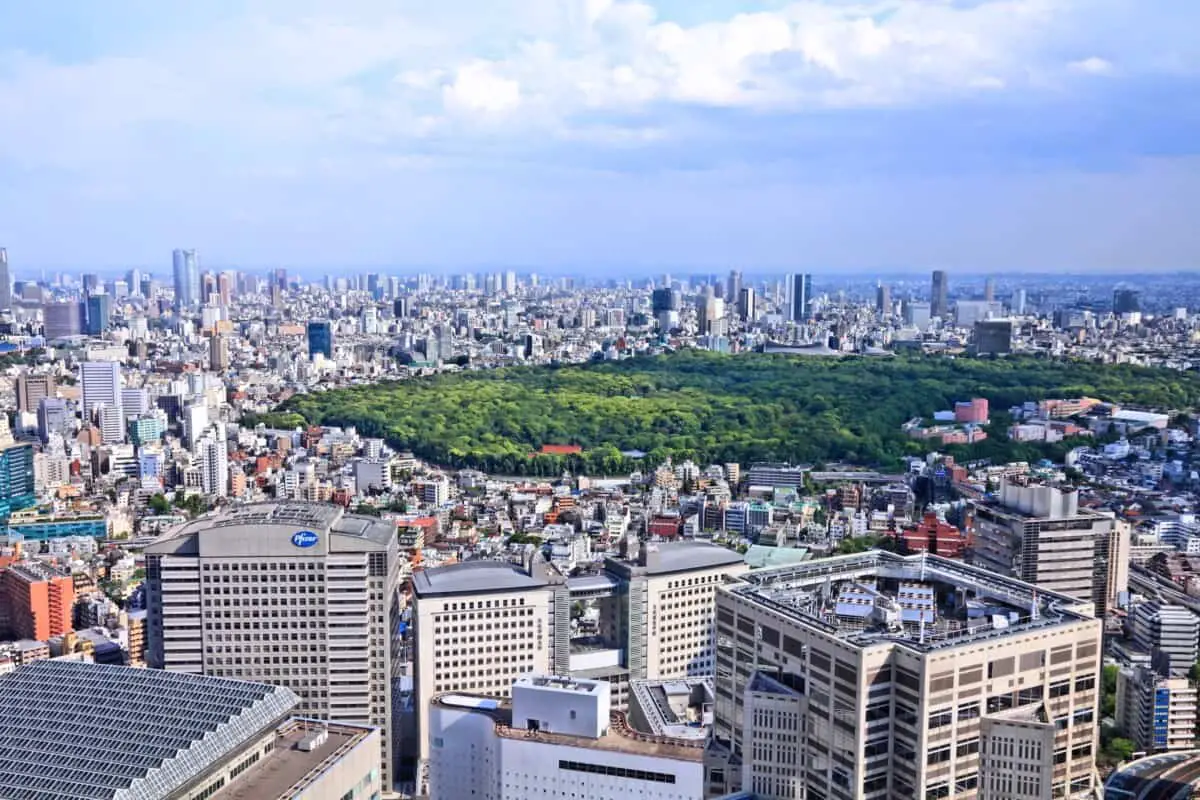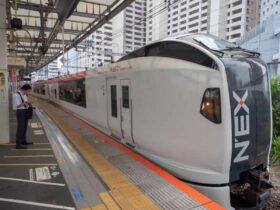When visiting Japan’s capital city, you can’t help but be instantly overwhelmed by its spectacular iconography; the eclectic fusion of futuristic skyscrapers, traditional wooden buildings, glowing lanterns, and dazzling neon signs.
For the newcomer, it can be difficult to know where to start, but to experience the true essence of this vibrant, densely populated cultural hub, one must venture downtown to one (or all) of its three main districts: Shibuya, Shinjuku, and Ginza.
This article will walk you through the variety of experiences Tokyo’s most prominent downtown areas have to offer; rest assured wherever you end up there’s plenty to explore.
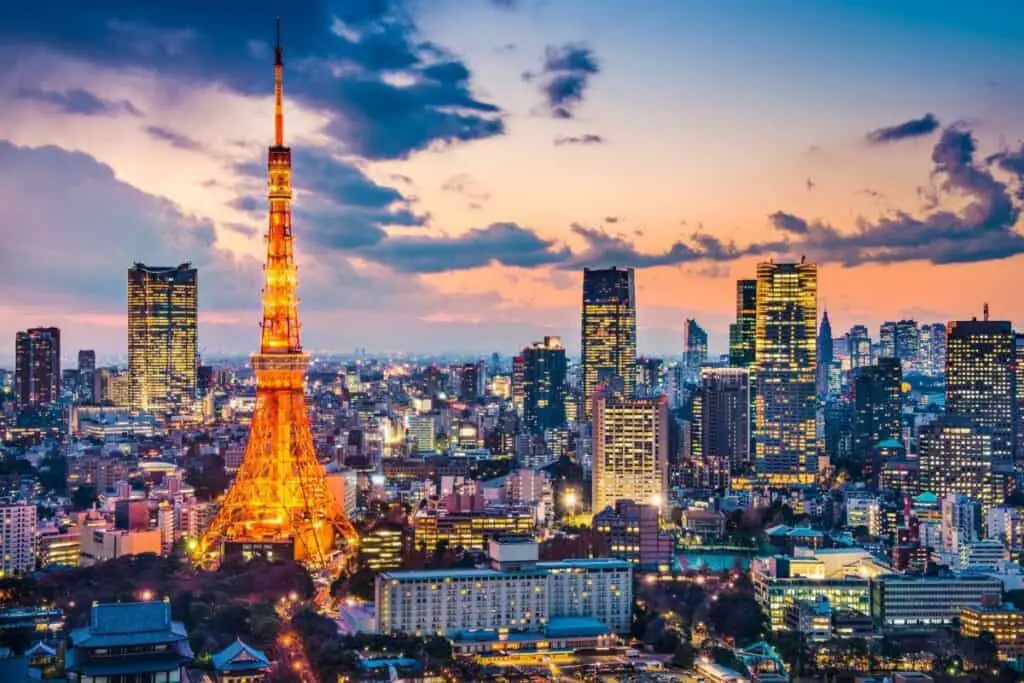
Head To Shibuya Where Youth Culture And Tourism Intersect
Nicknamed ‘the town that never sleeps’, young Tokyoites and tourists alike flock to Shibuya to sample its lively nightlife, restaurants, bars, and shops.
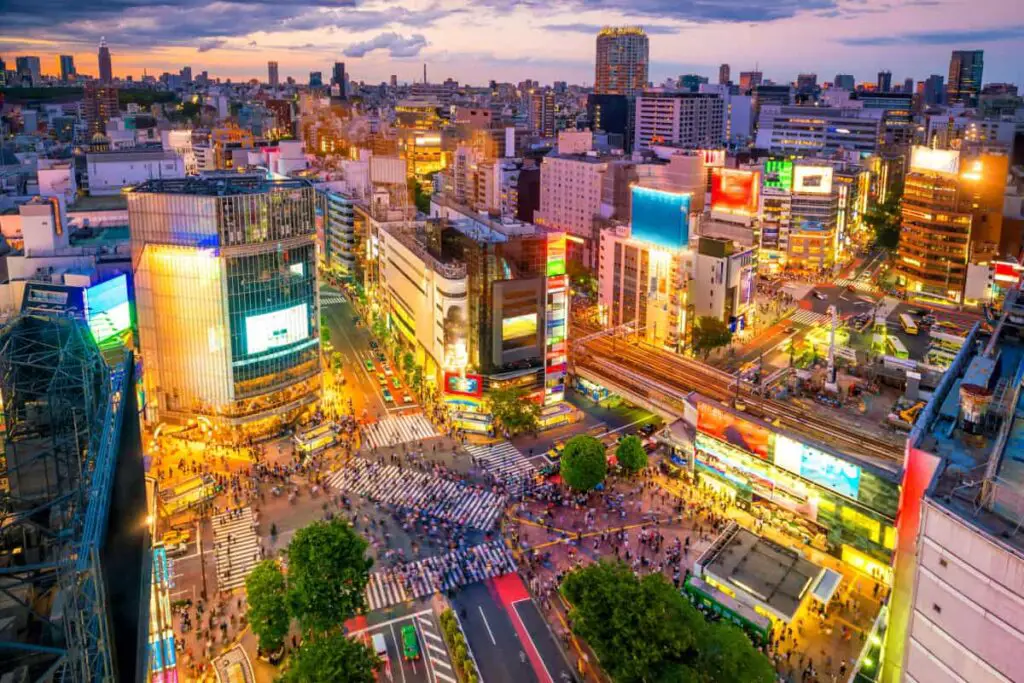
This area is instantly recognizable thanks to the world-famous images of its legendary Shibuya Scramble Crossing, which is a busy intersected pedestrian crossing situated in front of Shibuya station, near the popular meeting point of the Hachikō statue.
Similar in essence to Piccadilly Circus in London, or Times Square in NYC, multiple advertising billboards, signs, and massive video screens plaster the buildings which tower above the crossing, as scurrying herds of pedestrians head in a myriad of different directions like frenzied ants below.
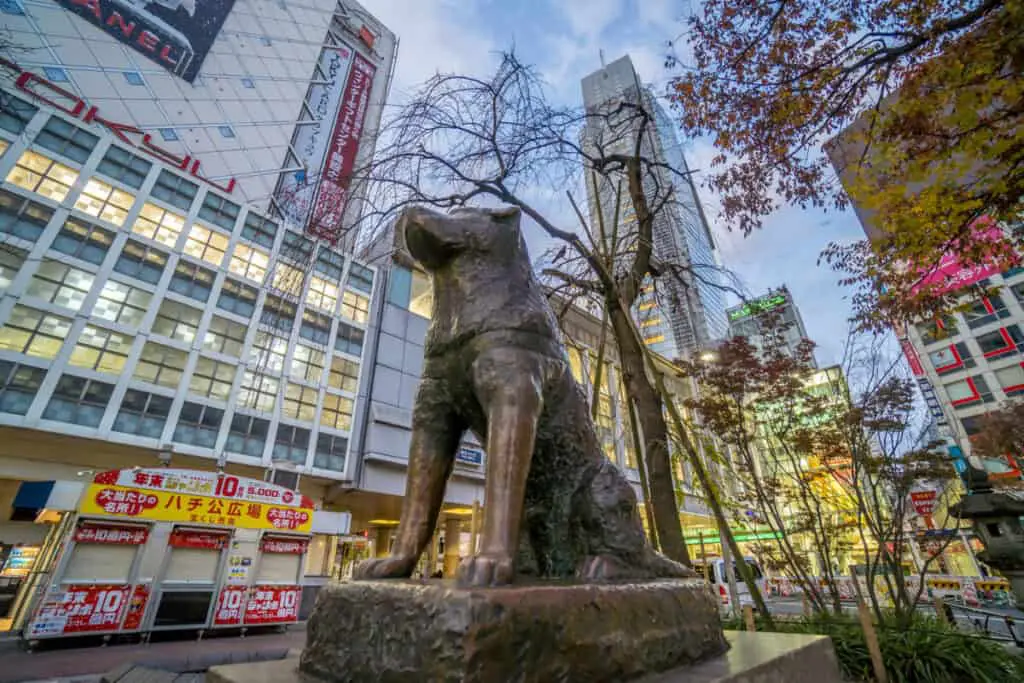
If you are keen to see what is currently trending, enjoy being at the center of the action, and thrive on crowds, and organized chaos, then Shibuya is the ultimate place to soak up Tokyo’s downtown atmosphere.
Shibuya Station has five main exits: Hachikō Gate, Central Gate, South Gate, New South Gate, and East Exit; Hachikō Gate being the most well-known.
Shibuya Centre-Gai, the busiest shopping street in Tokyo, is located just off the scramble crossing and offers the eager shopper everything from fashion to fast food, pharmacies to music stores.
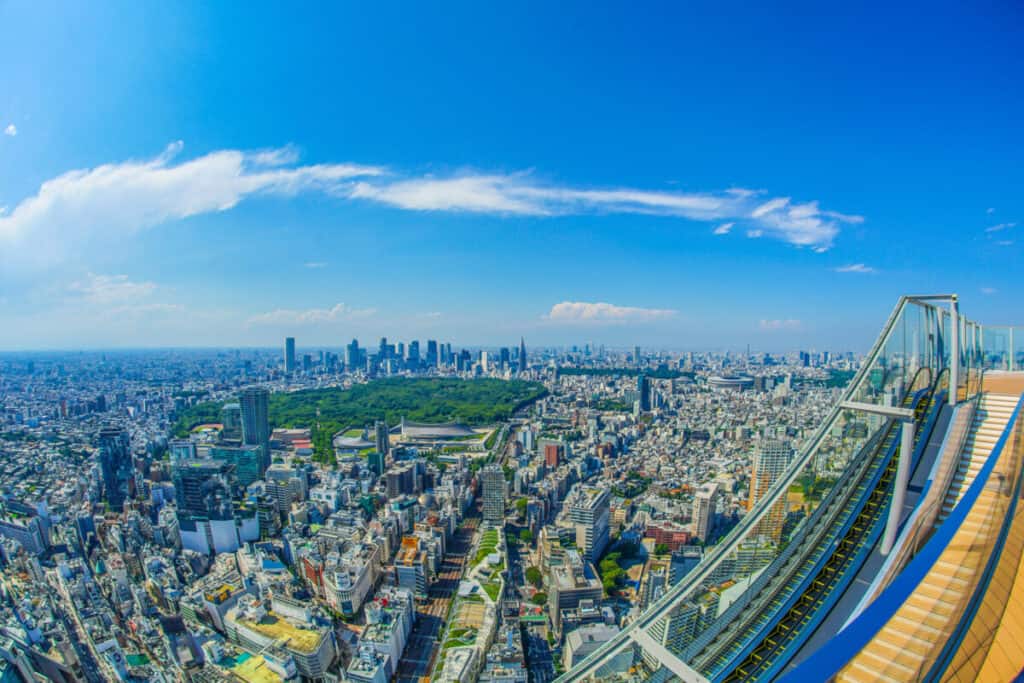
For creative and artistic types, there is a keen variety of entertainment centers offering gaming, music, and popular karaoke bars such as ‘Karaoke Kan Shibuya’, as featured in the film Lost In Translation, which is full of private karaoke rooms, the windows of which are back-lit by the neon glare of Shibuya.
As its nickname suggests, Shibuya is a bustling 24/7 kind of vibe; a humming throng of human traffic, with an estimated 500,000 pedestrians passing through its scramble crossing each and every day.
Dawn in Shibuya is a chaotic cacophony of weary passed-out clubbers and frenzied office workers heading downtown near Dōgenzaka and Miyamasuzaka in pursuit of their daily yen.
Aside from Shibuya Centre-Gai’s fast-paced youth and student culture, twenty-somethings can find a plethora of galleries, theaters, comedy clubs, and contemporary arthouse cinemas such as Cinema Vera located in the lively Maruyamacho neighborhood.
Shibuya Sky Observation Deck Virtual Tour
Shibuya Location Via Google Maps
The East Exit and South Gate areas of Shibuya station tend to be populated by middle-aged office workers and professionals.
If you’re a Westerner visiting Shibuya for the first time, be aware that this area of Tokyo is not for the faint-hearted and you will need to keep your wits about you, as it is a notorious hangout for a few hustlers, pick-pockets, and drunks.
If you’re joining the million or so other revelers for its world-famous Halloween celebrations at Shibuya Centre-Gai, it goes without saying that you need to be extra vigilant.
Discover Shinjuku Tokyo’s ‘Second Center’
The literal translation of Shinjuku is ‘New Inn Ward’ so named as it is Tokyo’s principal commercial and administrative ward, and widely recognized as its second center after Marunouchi and Ginza.
Home to the Tokyo Metropolitan building and the world’s busiest station, Shinjuku is a densely populated, dynamic downtown district (an estimated total of 346,235 inhabitants lived there in 2018) teeming with multicultural flair.
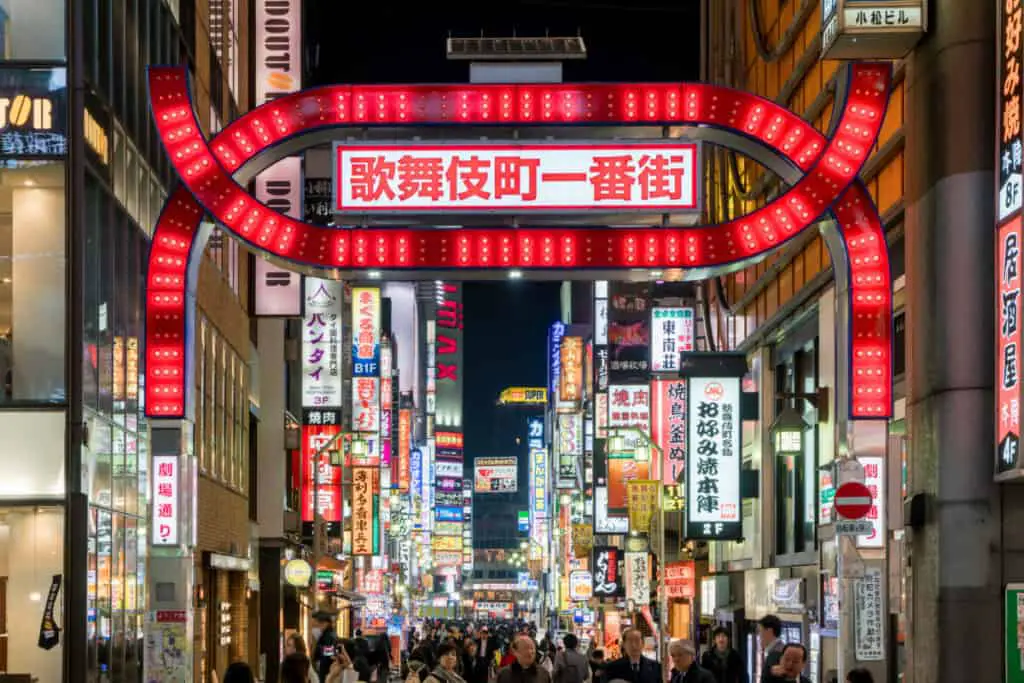
Whether you’re visiting Shinjuku in a retail frenzy, are keen to check out its notorious club district, or are in hot pursuit of after-work drinks, dinner, or a big night out, you’ll find there is practically nothing you can’t buy, eat or do in this lively district.
Before you brave the crowds though, it is well worth first familiarizing yourself with Shinjuku’s sub-districts.
Outside Shinjuku station, you will find an assortment of reputable department stores, electronics stores, cinemas, and cafes.
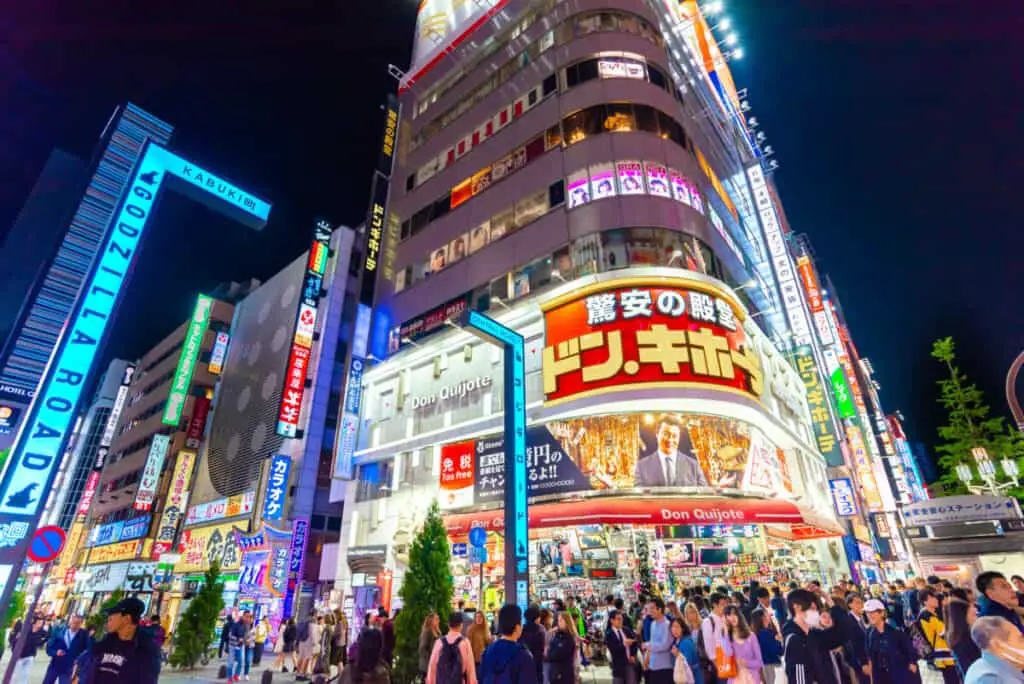
Shinjuku Location Via Google Maps
Specifically, the East Exit area houses the majority of general stores and restaurants, then as you venture further into the shopping streets around Shinjuku-Sanchōme Station, you’ll come to Shinjuku Ni-chōme; Tokyo’s best-known tourists-friendly hangout and host to an abundance of bars, clubs, and pubs.
Be aware that quite a few of the bars here operate a strictly members-only policy, so it is always worth checking the door policy first.
Next up you’ll find Kabukichō, aka ‘The Sleepless Town’, and Tokyo’s original drinking district, which is full of bars, hostess and cabaret clubs, and adult-entertainment shops.
Predictably, Kabukichō is a well-known hot-spot for unique outlets, and all manner of less than ideal activities, so be on the lookout for exorbitant fees and rip-off merchants.
If you’re looking for a slightly classier experience, the West Exit Area, personified by slick, polished skyscrapers housing infinitesimal offices, hotels, and smartly turned-out professionals is the best place to go for a cocktail or fancy dinner.
Virtual Tour Of Shinjuku
Alternatively, if you’re feeling nostalgic, why not take a leisurely retro detour along the alleyways of Omoide Yokocho and enjoy the local flavor of old Japan.
And finally, if you’ve had enough of the city, hop on a bus at the Shinjuku Expressway Bus Terminal, situated near the South Exit, which connects Shinjuku with 300 Japanese cities and 39 prefectures.
Go To Ginza For Premium Brands And High-End Dining
Ginza, originally home to Japan’s high society, is now one of Tokyo’s top shopping districts and an eclectic blend of old and new, popular for its premium brands and prominent high-end retailers, well-established iconic department stores, classy boutiques, and gourmet dining.
The area itself is comprised of eight sub-districts, neatly labeled 1-chōme to 8-chōme, and furnished with beautifully designed colorful buildings, housing a harmonious blend of traditional shops, some of which date back to the Edo period, and contemporary retailers promoting the latest labels and designs.
A vast selection of high-end Western-style restaurants and cafes can be found here, alongside traditional Japanese restaurants and eateries, and for the culturally inclined there are art galleries and theaters, such as the Kabukiza Theatre (host to traditional kabuki stage plays).
Ginza Location Via Google Maps
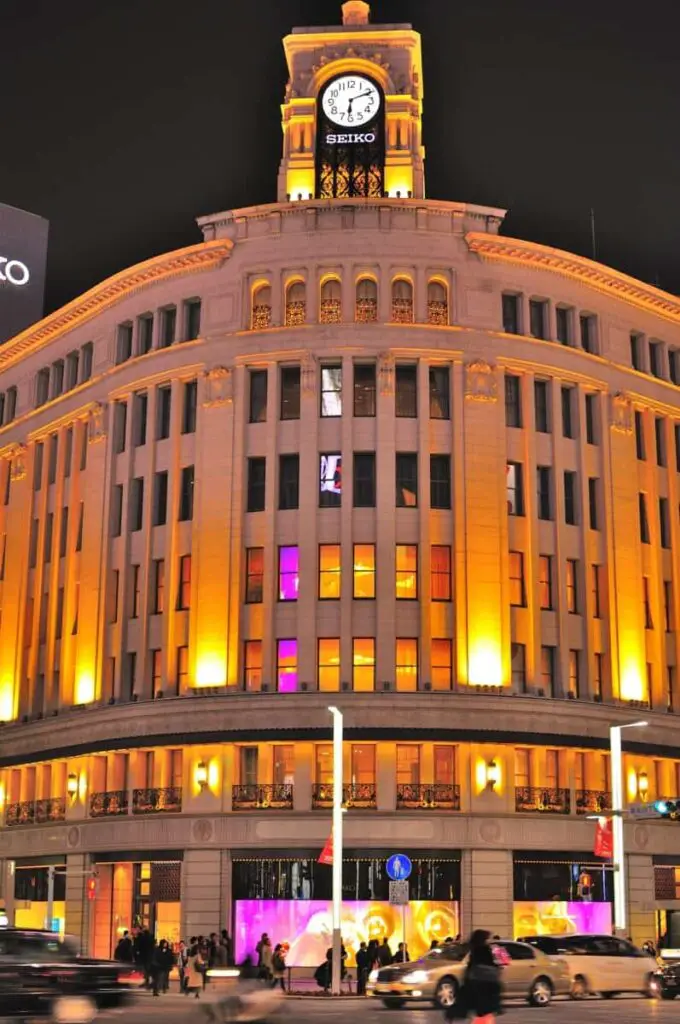
Iconic Japanese department stores, like Ginza Wako (which is located in a building that dates back to 1894) and Ginza Mitsukoshi (the oldest surviving Japanese department store chain), and smaller fashion retailers, such as Ginza Chuō-dōri.
On weekends and public holidays, the main shopping street of Ginza, Chuō-dōri, is pedestrianized from midday until 5pm–this is known as ‘Hokōsha Tengoku’, literally translating in Japanese as ‘pedestrian heaven’ – and it is filled with wall-to-wall shoppers, street performers, and musicians.
Ginza really comes alive at night and is well-known for its high-end hostess clubs, such as Namiki-dōri, who employ glamorous female staff members to entertain male clients with charming conversation and expensive beverages.
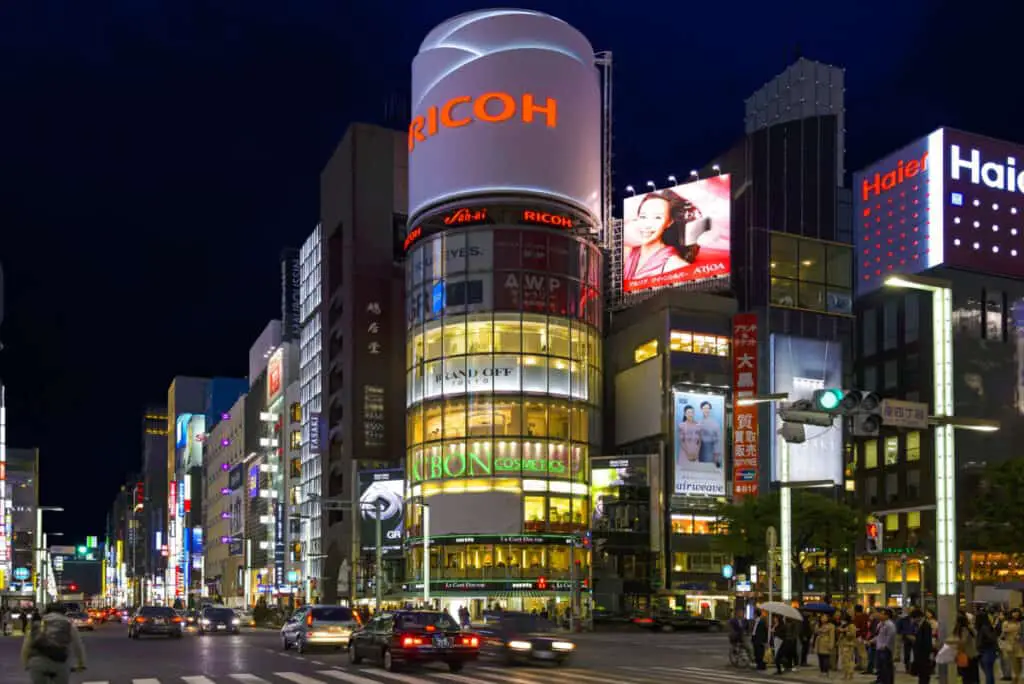
Women who work in hostess clubs could be described as modern-day geishas, providing flirtatious company and coquettish titillation for after-hours businessmen.
When visiting Ginza for its fine dining or nightlife, be aware that some of the more exclusive sushi houses and high-end restaurants will not accept first-time customers without a referral from a regular patron, so make inquiries first if you want to secure a table.
The same goes for exclusive clubs, some of which are strictly members-only and will not accept unvetted foreigners without a referral. If in doubt, always call ahead to check the door policy.
Reputedly one of the world’s most elegant and expensive city districts, Ginza predictably tends to attract a more mature, well-heeled visitor, i.e., someone who appreciates the finer things in life and is generally aged between 30 to 60 and upwards.
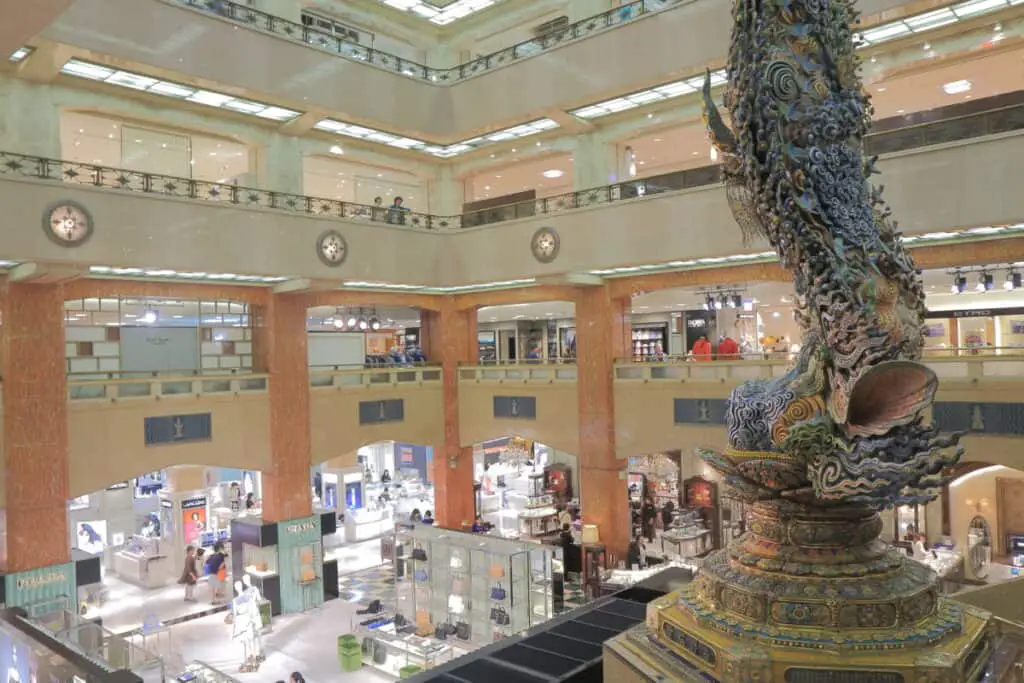
Explore Ginza Official Website
Be it the seasoned shopper who enjoys splurging their yen in reputable department stores like Mitsukoshi and Matsuya, or the 30-40 somethings who gravitate towards Tokyo Plaza Ginza, or the slightly younger crowd around Marronnier Gate Ginza.
Although Ginza has updated itself and embraced new trends in recent years in order to attract more fashionable twenty-something female shoppers, it largely remains popular amongst older clientele, not least because of its staggering price tags.

